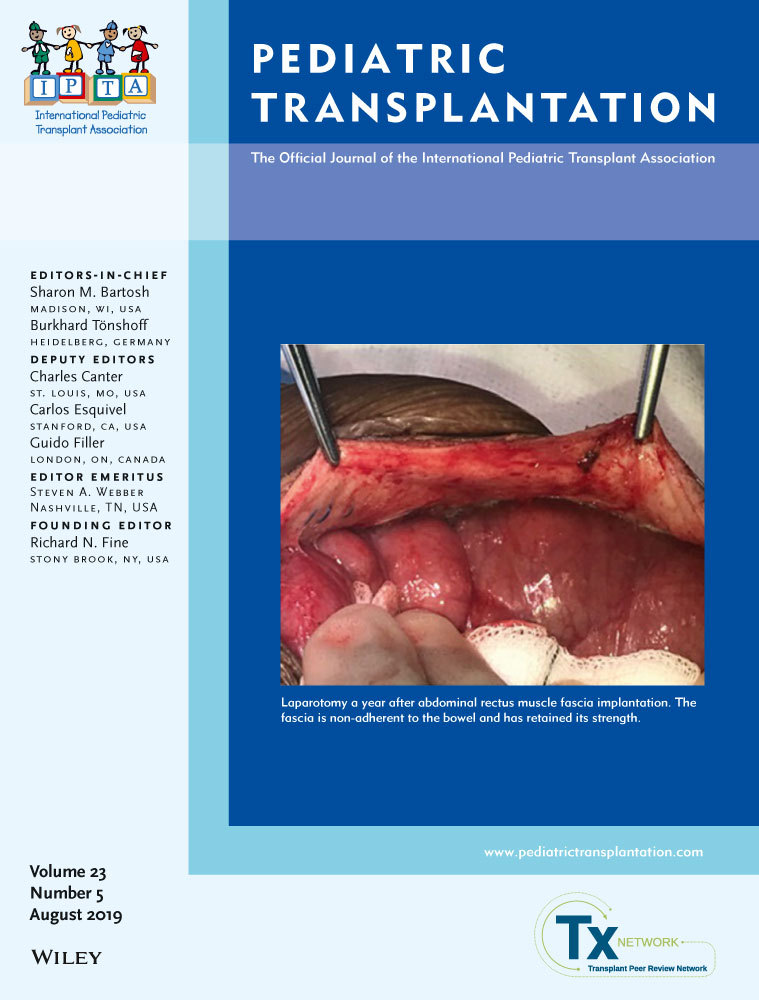Clinicopathologic characteristics of de novo nodular regenerative hyperplasia in pediatric liver transplant
Abstract
Liver NRH is seen in all patients age; however, more frequently in those over the age of 60 years and associated with multiple systemic diseases. In liver allograft recipients, the development of DnNRH has been linked with the use of azathioprine or vascular abnormalities. We present the clinicopathologic characteristics of 17 pediatric patients who underwent liver transplantation and subsequently developed DnNRH. The patients were divided into early and late onset depending if DnNRH was diagnosed within or beyond 4 years after transplant. Eight patients (47%) presented as early onset, of which two had normal ultrasound at time of diagnosis. One patient (12.5%) with early onset lost the graft secondary to DnNRH. Nine patients (53%) presented as late onset, of which two (22%) had normal ultrasound at time of diagnosis. Two patients (25%) of the late onset lost their graft secondary to chronic rejection and DnNRH. Two patients (12%) died secondary to cytomegalovirus pneumonitis and pancolitis. Furthermore, both groups presented with symptoms differing from the adult population in prior studies and were not associated with the use of azathioprine or vascular abnormalities. Interestingly, episodes of acute cellular rejection were more common in the early-onset group compared to the late-onset group. In conclusion, DnNRH in the pediatric age group has a different clinical presentation, possibly reflecting a different pathogenesis compared to the adult population.
CONFLICT OF INTEREST
None of the authors have any relationships with, or financial interest in, any commercial companies pertaining to this article.




